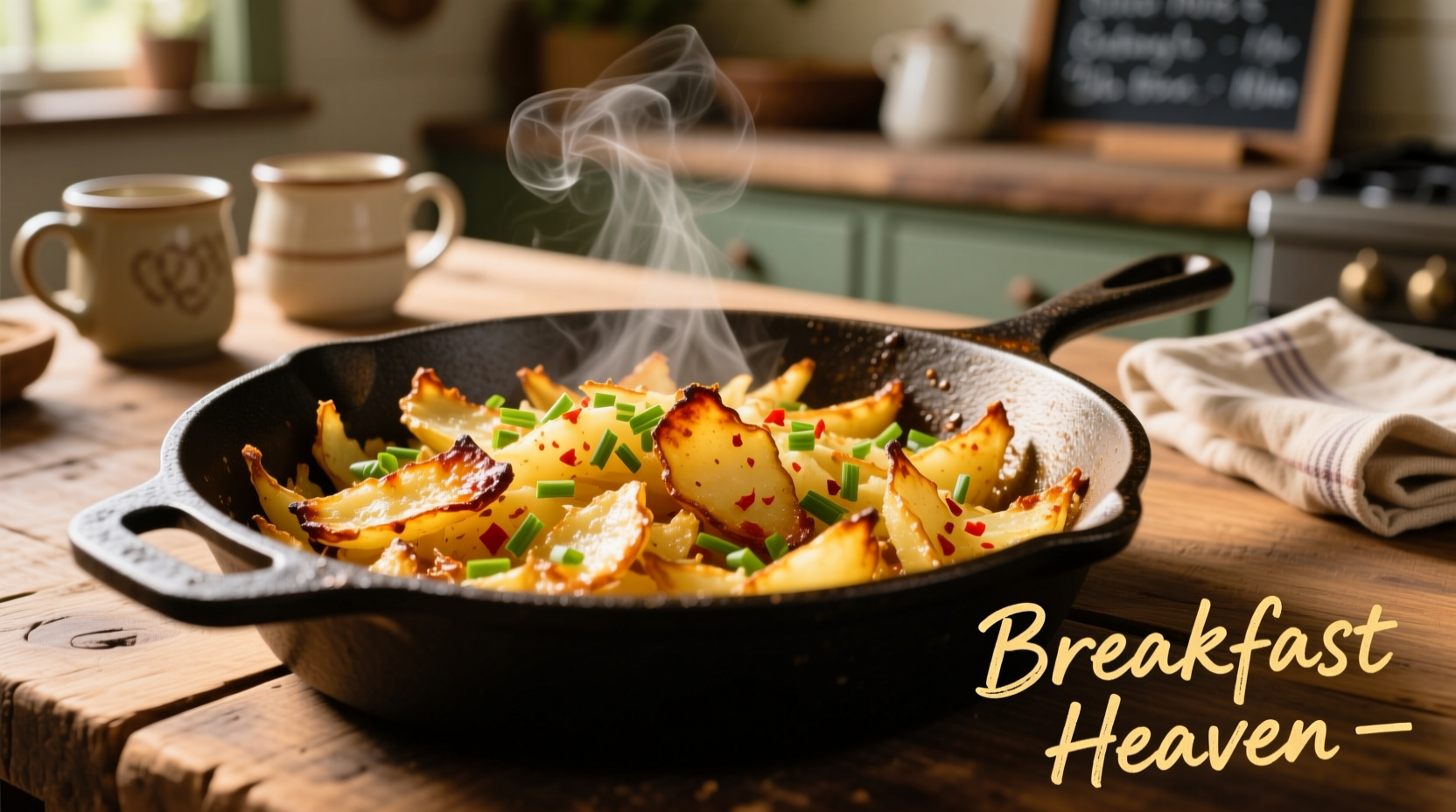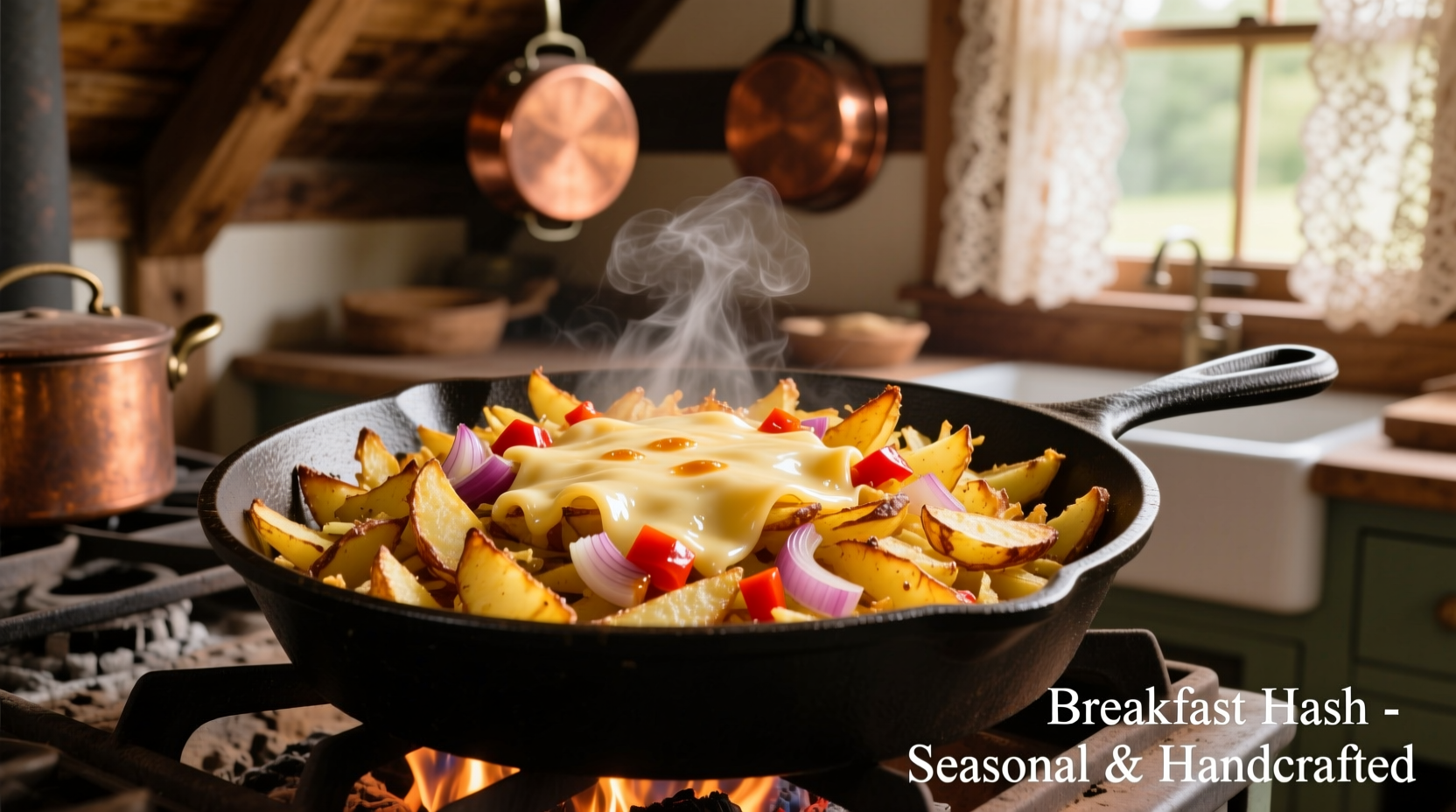Shredded potato hash delivers crispy-on-the-outside, tender-on-the-inside perfection when you use starchy potatoes, squeeze out excess moisture, and cook over medium-high heat with minimal flipping. This classic breakfast staple transforms humble ingredients into a golden, flavorful side dish ready in under 30 minutes.
There's nothing quite like the satisfying crunch of perfectly cooked shredded potato hash. This humble dish has journeyed from European farmhouse kitchens to become a beloved American diner staple, offering home cooks an accessible way to create restaurant-quality results. Whether you're preparing a weekend brunch or seeking a comforting weeknight side, mastering shredded potato hash unlocks endless culinary possibilities.
The Evolution of Shredded Potato Hash
While today's shredded potato hash appears simple, its story spans centuries and continents. Originating from European potato pancake traditions like the German Kartoffelpuffer and Swiss Rösti, immigrants brought these techniques to America where they evolved into the shredded potato hash we know today. By the early 20th century, hash became a diner menu staple, valued for its ability to transform leftover potatoes into something extraordinary.
| Era | Development | Key Characteristics |
|---|---|---|
| 1700s-1800s | European potato pancake traditions | Whole grated potatoes, minimal seasoning, pan-fried |
| Early 1900s | American diner adaptation | Shredded potatoes, added onions, consistent crispiness |
| Mid-1900s | Breakfast menu standardization | Pre-shredded potatoes, standardized cooking methods |
| 2000s-Present | Gourmet reinterpretations | Specialty potato varieties, creative mix-ins, artisanal preparations |
Choosing Your Potatoes: The Foundation of Great Hash
The potato variety you select dramatically impacts your final dish. While many cooks reach for whatever's in the pantry, understanding potato characteristics ensures consistent results. Starchy potatoes like Russets provide the ideal balance of moisture content and structure for achieving that coveted crispy exterior with fluffy interior.
Consider these factors when selecting potatoes for shredded hash:
- Moisture content - Higher moisture requires more thorough squeezing
- Starch level - Determines crispiness and structural integrity
- Sugar content - Affects browning and caramelization
- Texture when cooked - Impacts mouthfeel and final presentation
Essential Equipment for Perfect Shredded Potato Hash
While shredded potato hash requires minimal equipment, having the right tools makes a significant difference in your results. A cast iron skillet remains the gold standard for even heat distribution and optimal browning. The heavy construction maintains consistent temperature when adding ingredients, preventing the common mistake of temperature drops that lead to soggy hash.
Alternative options include:
- Carbon steel pans (similar properties to cast iron)
- Heavy-bottomed stainless steel skillets
- Non-stick pans (less ideal for maximum crispiness)

The Critical Moisture Removal Step
Excess moisture represents the single greatest obstacle to achieving crispy shredded potato hash. Potatoes naturally contain significant water content that must be removed before cooking. This step separates adequate hash from exceptional hash.
Professional chefs employ several effective moisture removal techniques:
- Cheesecloth method - Wrap shredded potatoes in cheesecloth and twist to extract liquid
- Press method - Place potatoes in a fine mesh strainer and press with the back of a spoon
- Salt draw method - Toss shredded potatoes with salt and let sit 10 minutes before squeezing
Regardless of method, continue removing moisture until the potatoes form a cohesive mass that holds its shape when squeezed. This critical step prevents steaming and ensures proper browning.
Mastering the Cooking Process
The cooking technique for shredded potato hash requires precision and patience. Many home cooks make the mistake of moving the hash too frequently, disrupting the crucial crust formation. Follow these steps for optimal results:
- Preheat your skillet over medium-high heat for 5 minutes
- Add sufficient fat (duck fat, clarified butter, or high-smoke point oil)
- Spread shredded potatoes in an even ½-inch layer
- Resist the urge to stir for at least 5-7 minutes
- Flip in sections using a spatula when golden brown
- Cook second side until equally crisp and potatoes are tender
Temperature control proves essential throughout the process. If the skillet is too hot, the exterior will burn before the interior cooks through. If too cool, the potatoes will absorb excess fat and become greasy. The ideal temperature range sits between 350-375°F (175-190°C).
Context-Specific Cooking Adjustments
Understanding when to modify your technique based on specific circumstances ensures consistent success. These context boundaries help troubleshoot common issues:
- High-altitude cooking - Reduce heat slightly as water boils at lower temperatures
- Humid environments - Increase moisture removal time by 25-50%
- Leftover potato hash - Re-crisp in oven rather than microwave to maintain texture
- Different potato varieties - Adjust cooking time based on starch content
Flavor Variations and Creative Additions
While classic shredded potato hash stands perfectly on its own, creative variations can elevate this simple dish. Consider these complementary additions that enhance rather than overwhelm the potato flavor:
- Herb-infused oils - Rosemary or thyme oil drizzled after cooking
- Smoked paprika - Adds depth without overpowering heat
- Caramelized onions - Cook separately for maximum flavor impact
- Finely diced bell peppers - Adds color and subtle sweetness
When incorporating additional ingredients, remember that less is often more. The potato should remain the star, with supporting elements enhancing rather than dominating the dish.
Serving Suggestions for Maximum Enjoyment
Shredded potato hash achieves its full potential when paired thoughtfully with complementary dishes. Traditional breakfast pairings work well, but don't limit yourself to morning meals. This versatile side dish shines alongside:
- Fried or poached eggs with runny yolks
- Smoked salmon or lox
- Roasted chicken or turkey
- Grilled sausages or bacon
- Simple green salads for contrast
Serve immediately after cooking for optimal texture. The brief window between perfect crispiness and softening makes timing crucial for the best dining experience.
Troubleshooting Common Shredded Potato Hash Problems
Even experienced cooks encounter challenges with shredded potato hash. Understanding these common issues and their solutions ensures consistent success:
- Soggy hash - Inadequate moisture removal or insufficient preheating
- Burnt exterior, raw interior - Heat too high or potatoes cut too thick
- Sticking to the pan - Insufficient fat or moving too soon
- Uneven browning - Inconsistent potato shreds or improper spreading
Remember that practice improves results. Each batch teaches valuable lessons about your specific equipment, ingredients, and cooking environment.
Storage and Reheating Guidelines
While shredded potato hash tastes best fresh, proper storage allows you to enjoy leftovers without sacrificing too much quality. Cool completely before storing in an airtight container in the refrigerator for up to 3 days.
For optimal reheating:
- Oven method: 375°F (190°C) for 10-15 minutes on a baking sheet
- Saute method: Medium heat in skillet with small amount of fat
- Avoid microwave: Creates uneven texture and sogginess
Freezing shredded potato hash works well when properly prepared. Spread cooked hash in a single layer on a baking sheet, freeze until solid, then transfer to freezer bags. Reheat directly from frozen in a hot skillet.











 浙公网安备
33010002000092号
浙公网安备
33010002000092号 浙B2-20120091-4
浙B2-20120091-4